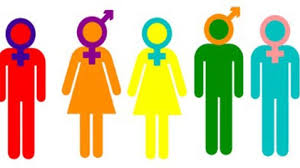J.K. Rowling has again spoken out against transgender women, taking an extreme binary position on gender. She, comedian Dave Chapelle, and other anti-trans activists fight against all transgender rights, especially the extreme position that gender is a social construct, a perspective born of the work of French postmodern philosopher Michel Foucault and more recently American philosopher Judith Butler.
I believe the truth, as is so often the case, is in the radical middle. I call it radical because our human tendency is to go from one extreme to the other. I believe the manner in which we are socialized greatly affects our expression of gender. In the ten years I have lived as Paula, I have lost a lot of confidence, because the world does not encourage women in the same way it supports men. It does not empower women as much as men. There is a reason women are always apologizing for themselves. It is expected of them.
At the same time, so much of gender is, in fact, biologically determined. Only women can give birth. Men’s bodies are more powerful than women’s, and there are significantly different ways in which our gendered bodies respond to a myriad of human experiences and stimuli.
If a person has one of the many conditions that are collectively referred to as intersex, there are bodily ways in which that individual has physical characteristics of both sexes. If the sexual differences are primarily in the brain, as is true with the majority of transgender people, it is more difficult to know how to approach the physical bodies that have developed. I tried for decades to live responsibly and peacefully in my male body. My brain, however, had other ideas.
The way in which my brain responded to the departure of testosterone and the arrival of estrogen, and the changes that brought to my body, is all the proof I needed to know I am transgender. A cisgender male would be greatly distraught to have his body begin to appear female, or to lose the effects of testosterone. In my case, it felt like my brain had been screaming for a lifetime to feel the effects of estrogen and the absence of testosterone. It is as if my brain said, “Finally, this is the way things are supposed to be. I told you the body you had did not match what I knew myself to be.”
I do not know the cause of gender dysphoria. There are indications it happens in the second trimester of pregnancy when the developing brain does not make a complete connection to the body that is being created. The truth is that we do not know the exact cause of this brain disconnect. We do know it has a powerfully negative effect on the individual. Transgender people have a 41 percent suicide attempt rate, six times higher than any other condition in the DSMV. I do not have to understand causation to understand the mental distress of being transgender.
What I know to be true is that I personally feel like I come from the borderlands, the liminal space between genders. I also know I am much happier being seen by the world as a woman than I was being received by the world as a man. I am much more at peace in this body, living in this gender.
While I do not personally need to know any more about the causation of my gender dysphoria, I am interested in what the current studies are telling us about the differences between male and female brain function, particularly as it relates to how information is processed in the hemispheres of the brain.
A study, Structural Connectivity Networks of Transgender People, was published in the journal Cerebral Cortex (October 25, 2015) compared the brain functioning of 93 people, 23 of whom were male to female transgender individuals and 21who were female to male. The study compared the transgender people with a group of 25 cisgender males and 25 cisgender females. The 44 transgender people were studied prior to hormonal treatment. Using fMRI ,the study determined that the brains of transgender people function about halfway between male and female. Post hormonal treatment, transgender women’s brain functioned more closely to cisgender women. The same is true for trans men; after hormonal treatment they functioned more like cisgender men. I resonate with those findings.
Gender is a spectrum, and everyone has more masculine and feminine qualities in specific areas of their lives. For example, the human voice typically functions between 80 hertz and 255 hertz. Women’s voices usually register between 165 hz and 255 hz, while men’s voices register between 80 hz and 180 hz. As you can see, between 165 hz and 180 hz a voice can be either male or female. We decide which it is based on visual and verbal clues. How are words pronounced? Where in the body are they formed, the chest or the throat? What gender does the person appear to be? The process is not nearly as easy as we think. People of both genders are often misgendered on the telephone.
All of that to say that gender is fluid. Nevertheless, there are characteristics that are more common among those with XY chromosomes than those with XX chromosomes. Women are more likely to fire neurons across the two halves of the brain than men. Men’s brains tend to function within hemispheres, but have a more difficult time crossing between hemispheres. Women’s neuron activity looks more like a ball of yarn across the hemispheres of the brain, while men’s activity is more linear, within hemispheres.
This difference in brain functioning accounts for how differently men and women tend to lead. In my next post, I will talk about those differences.
